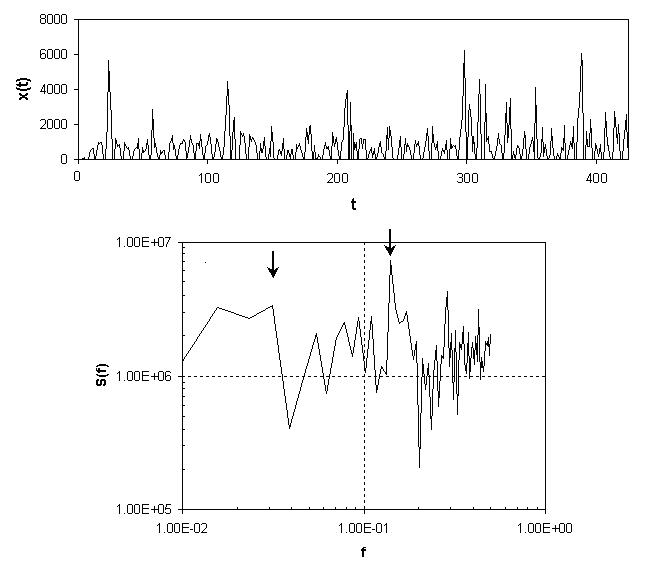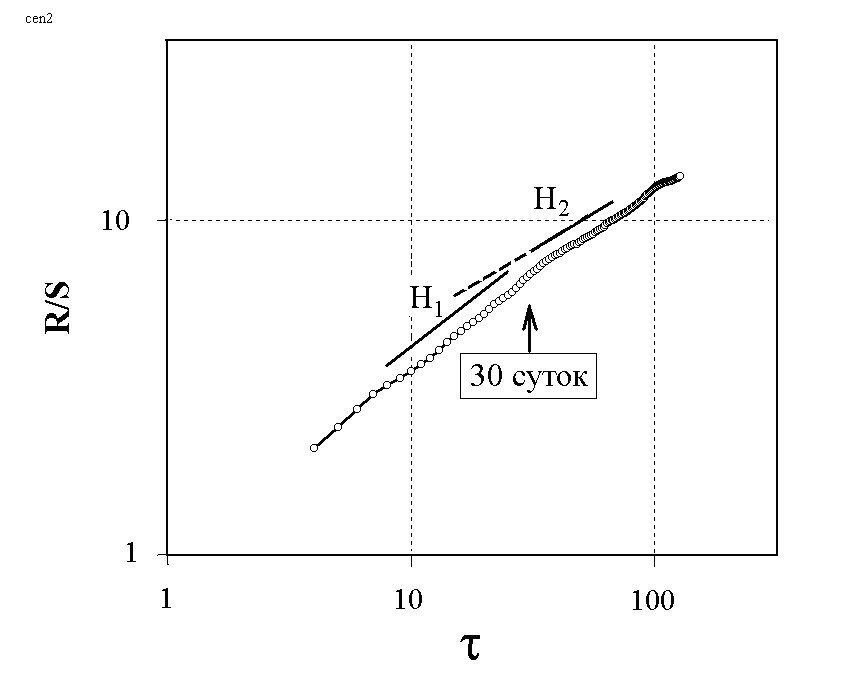Analysis of temporal fluctuations of the volume of income taxes collected in St.Petersburg administrative districts has been performed. The dynamics of the analyzed time series has a multiscale noise structure which includes both periodic and stochastic components. Using the Fourier spectral analysis technique, the Hurst’s rescaled range analysis and the Pareto distribution method, we have recognized the groups of districts with low and high stability of the 30-day microeconomic cycle. The results confirmed that during the considered period (1996-2000), the city economy was at stage of active formation and met general criteria of economic self-organization.
O. Y. Uritskaya. Investigation of Stability of Revenue Flows in St.Petersburg Administrative Districts by Fractal Analysis Methods // Modern Problems and Methods of an Improvement of Government Management.– St.Petersburg: SPbGTU Press, 2004. – p. 365 – 378.
Fig. 1. Example of a time series of tax revenues (top) and its power spectrum (bottom). On the spectrum arrows show two main harmonics corresponding to a period of 7 and 30 days (data of the Moscowsky district of Sankt-Petersburg, Russia).
Fig. 2. Example of long-range dependence R/S as a function of time scale T, showing two sections with different Hurst index (data Center-2 district of Sankt-Petersburg, Russia).


